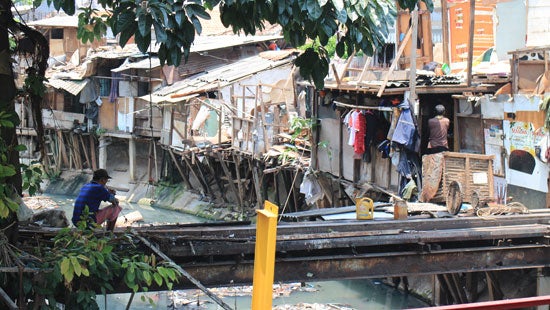
Evidence and analysis, when used well, can form the foundation for effective policymaking. But what happens once an analytical report is published, and the findings are shared? In the worst case, these reports sit collecting dust on a few lucky office shelves.
In the best cases, however, smart, rigorous, and timely evidence leads to real impact for the least well off. We set out recently to find out a bit more about how this can work in practice, looking at the case of Indonesia.
Effective social assistance is crucial not only for helping people move out of poverty, but also keeping people from falling into poverty. Too often, however, well-meaning programs do not reach those who need them the most. The poor stay poor, shocks push the vulnerable into poverty, and fiscal space is wasted on programs that are not doing what they need to do.
This issue became particularly important in Indonesia in recent years, as the country’s rate of poverty reduction began to slow down after years of rapid decline, and as it looked to increase spending on education and health following a major reform in subsidies.
One big issue was that each of Indonesia’s government ministries was working with its own list of program beneficiaries, delivering assistance in one area but not necessarily in others. This led to uneven targeting of programs, and to some people getting exactly the help they needed, while others went without. Keep in mind that missing out on food or health or cash assistance can have a profound impact on someone living in poverty, and can form an insurmountable barrier to their moving out of poverty.
The government of Indonesia set out to develop a solution to this issue, to make sure that those that need it most were getting the right assistance at the right time in the right way.
It became clear that developing one central national registry of poor and vulnerable households would cut down on the overlap and gaps, and help social assistance programs actually reach the poor. Each ministry could subscribe to a central database, pulling from the most up to date list of which families are in the bottom 40 percent of Indonesia’s income distribution, and thus need assistance.
As with many broad-based reforms, this did not happen overnight. The Government of Indonesia’s experts started by putting their heads together with World Bank colleagues, to gather the evidence needed not just from Indonesia, but from countries like Mexico, Brazil, Georgia, the Philippines and others that had faced similar issues in the past. This way, Indonesia did not have to start from scratch, but could also learn from others’ experiences to develop their own solution. They continued to work closely with World Bank colleagues to develop the registry, called the Unified Database, and are now managing it independently in the Ministry of Social Affairs.
So is it working?
By the numbers, Indonesia’s Unified Database and social assistance framework is far more effective than the earlier approach. In 2005, of the poorest 10 percent of households in Indonesia only 68 percent received subsidized rice (Raskin) or free health care (Jamkesmas), two of the main social assistance programs at the time.
As of 2014, the new centralized targeting approach means about 85 percent of the poorest 10 percent of households now receive at least one social assistance program, and the government was working hard to improve coverage. But if you’re in that 15 percent, it doesn’t matter that there is 85 percent coverage- you still feel the deprivation of not receiving crucial food, health, and education assistance that can help you keep your family afloat.
To get a sense of how this is working in practice, we went out to talk to people living in some of Jakarta’s poorest areas. Riding through the city, it is hard not to notice the sharp differences between those who have and those who do not- we rode past a 4-story luxury goods store, and just a few minutes later arrived in a neighborhood of ramshackle homes near the port.
Suyatmi, one of the women we met, told us that she hasn’t received any assistance, and that she often has to fast to beat her hunger.
In another neighborhood, we visited a woman named Nia. Her home is so close to the train tracks that the noise and shaking often wakes her up at night.
She told us that she feels as though the rich keep getting richer, and the poor poorer. But she has been able to get some food benefits, and had just gotten her new health card when we spoke to her in December.
And finally, we spoke to Harun Nur, in a run-down neighborhood overlooking some of Jakarta’s newest developments. He told us that he was able to get treatment for a serious lung infection free of charge, using his health benefits.
So going forward, there is still plenty of work to do to make the targeting system even more effective. Bambang Widianto, Executive Secretary for Indonesia’s National Team for the Acceleration of Poverty Reduction, told us that they are spending a lot of time trying to reach that last 15 percent of households. Vivi Alatas, our World Bank colleague in Jakarta, pointed to one reason why this last 15 percent is so difficult to capture. “Poverty is very fluid in Indonesia, people enter and exit poverty all the time” she told me. So keeping the central database up to date will be a challenge for the government as it moves forward and continues to refine its targeting system.
Indonesia is just one example of how good analysis can help improve the lives of the poorest- but there are many more. We’ll continue to profile these when we can to help bring to light the impact that good evidence can have on the world’s poorest people.



Join the Conversation